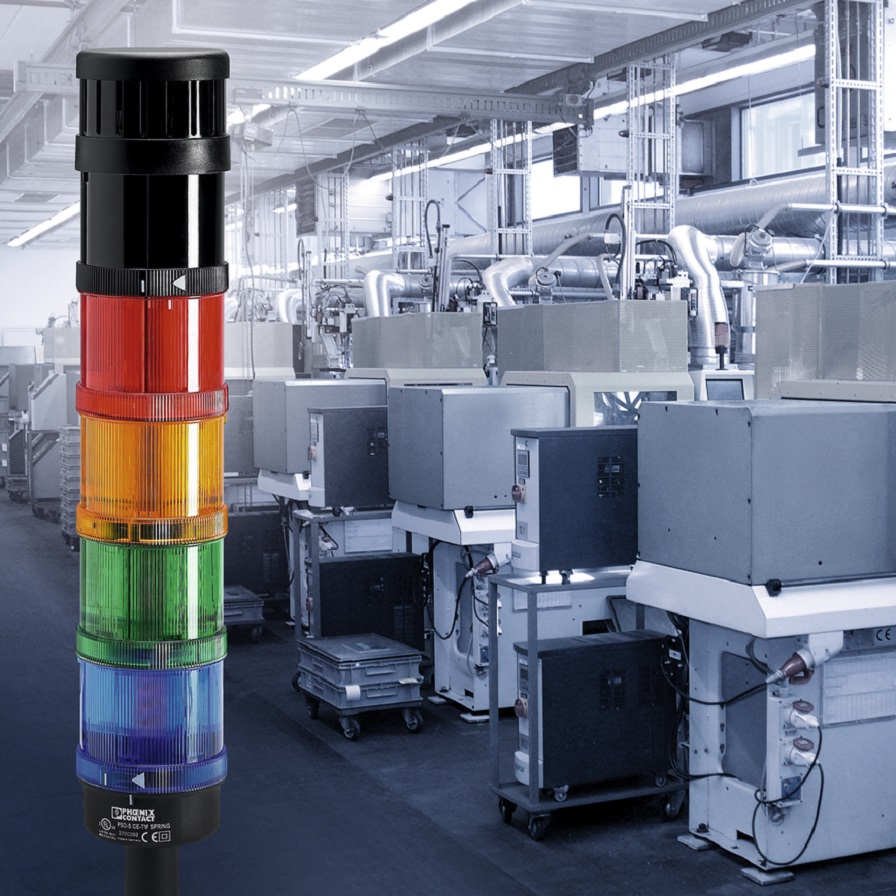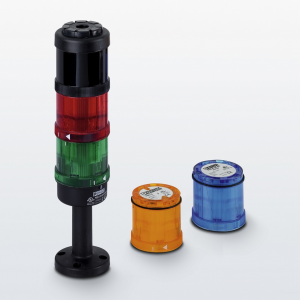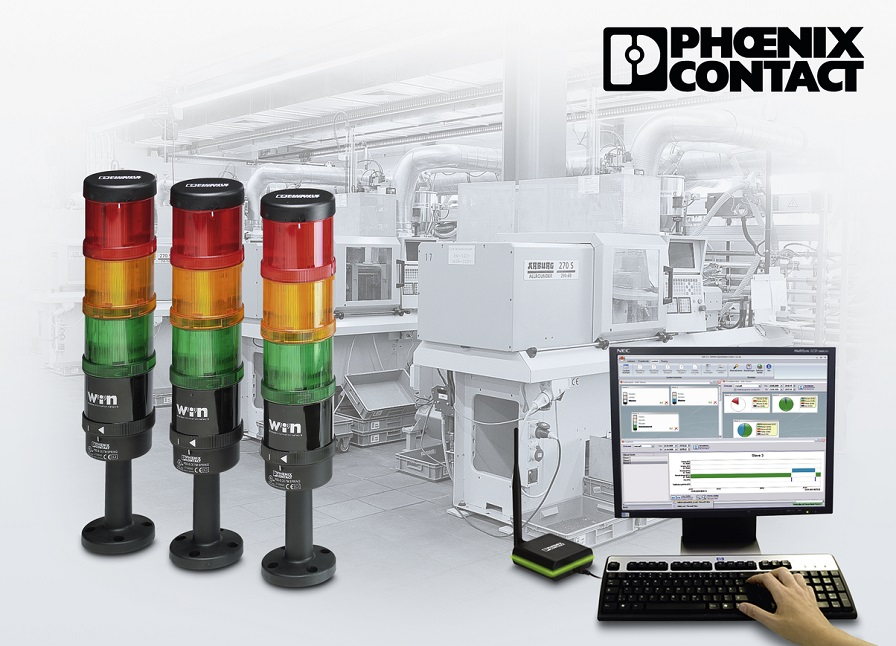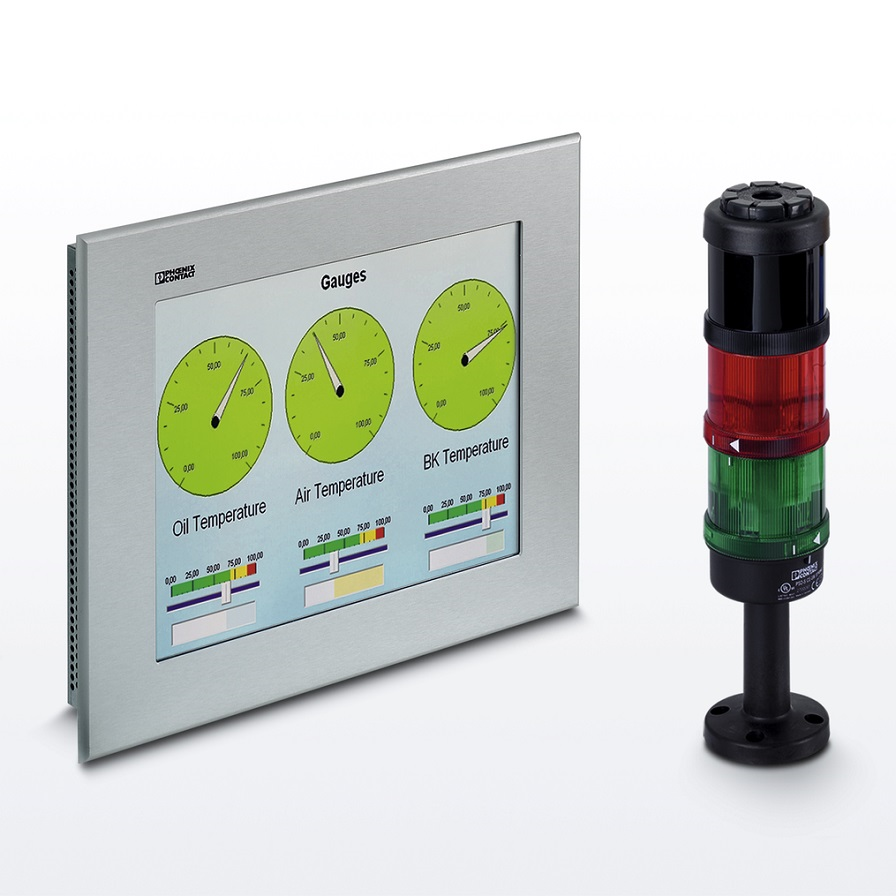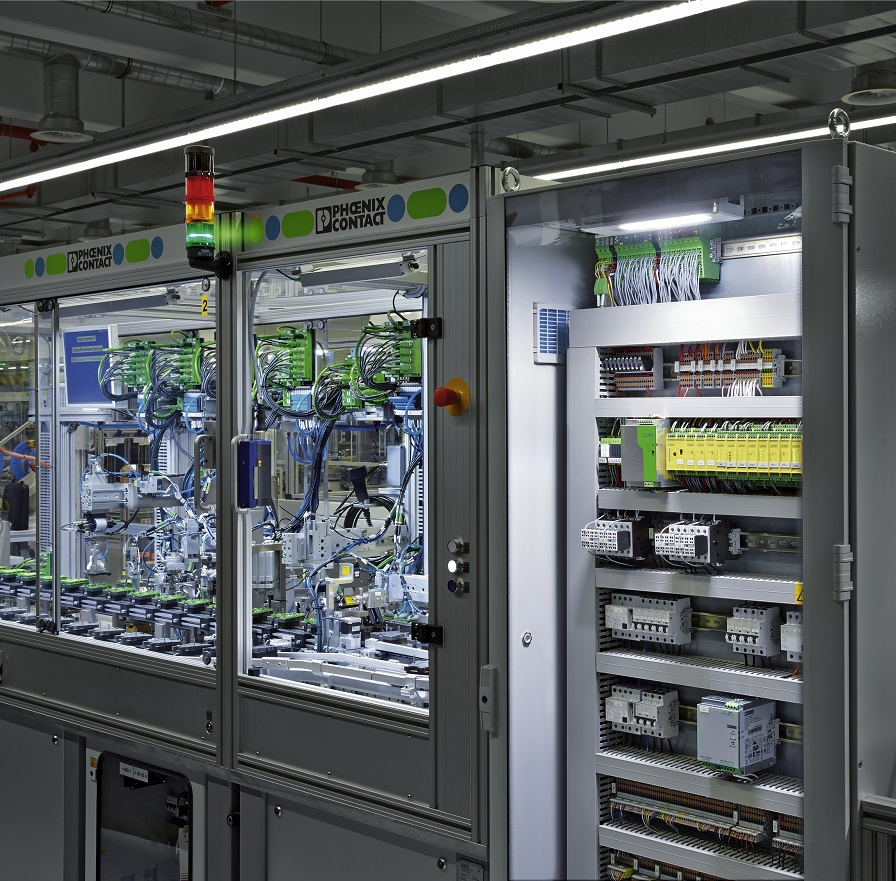Clear signalling at all times, in all places
Reducing downtime and costs is the only way to ensure a competitive advantage. Unmistakable signalling status of the machine or system states is a crucial requirement. These modular signal towers of the PSD (Phoenix Signalling Devices) product range are characterized by their wide range of alarm signals in optical as well as acoustic modules.
If you require central monitoring of the machine or system status, even in an environment without network infrastructure, you are able to choose between two cost-effective alternatives. The PSD signal tower allows for the connection of a wireless interface and also enables direct or subsequent evaluation on the PC.
The PSD signal tower is also flexible when it comes to system expansion and conversions due the modular design.
Advantages of the PSD signal towers from Phoenix Contact:
Clear status indication
The optical elements are available in a choice of 5 colours with various different signal types.
Clear audible indication
The acoustic elements are available in siren, buzzer and voice output.
Fast installation
A signal tower can be erected or extended without using any tools in a matter of seconds by simply placing the individual signal elements on top of each other and turning the bayonet locking system. This automatically establishes an electrical connection between the elements. The control lines are then connected to the screw or spring-cage terminal blocks in the base elements.
Service life
Minimum LED service life of 50,000hrs which adds up to an estimated lifespan of 6 years if it is in operation for 24hrs a day, 356 days a year.
Various mounting options
The signal tower portfolio is completed by a wide range of mounting elements, which ensure optimum mounting of signal towers according to the conditions. You are able to choose from surface mounting or tube mounting.
High degree of protection
IP65, when installed.
Central monitoring and control
Using the WIN (Wireless Information Network) system, it is possible to simultaneously monitor the status of up to 50 machines at a central point by transmitting the status via wireless elements integrated into the signal towers (slaves) to a receiving element (master) that is connected to the USB port of a PC.
A slave element has a wireless range of up to 300m. The distance of the slave element from the master can be increased by up to 900m with the help of integrated repeater and routing devices.
Advantages of our WIN system:
- Simultaneous monitoring of a large number of machines
- Central monitoring is possible, even in area without network infrastructure (example, Ethernet)
- Can be operated parallel to other wireless applications
- High wireless range
- No programming or parameterization required
- Graphical evaluation of machine status
- Retrospective analysis of machine status
- Error messages alarm via e-mail
Optimum detection of machine status
The signal towers are used to indicate the status of the machines or systems, including operating states, start up, normal operating, warnings, error alarm messages, pending critical states, acknowledgement requests, etc. There are also a numerous other applications, such as the status display of access controls and cabinet systems.
Interested to find out more? Get in touch with us at marketing@phoenixcontact.com.sg!


